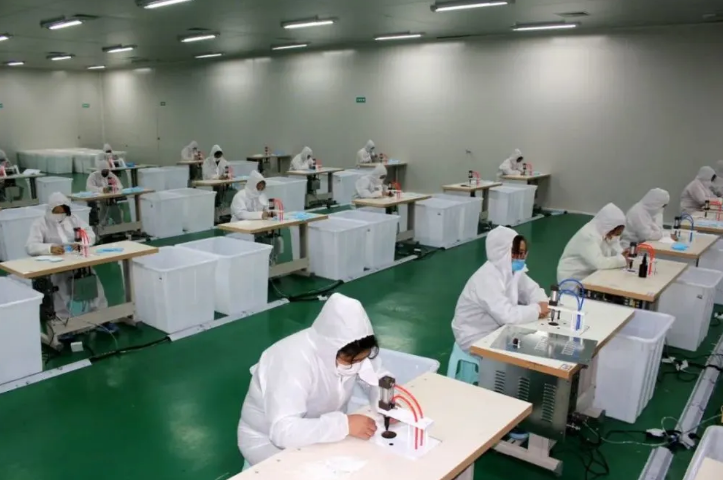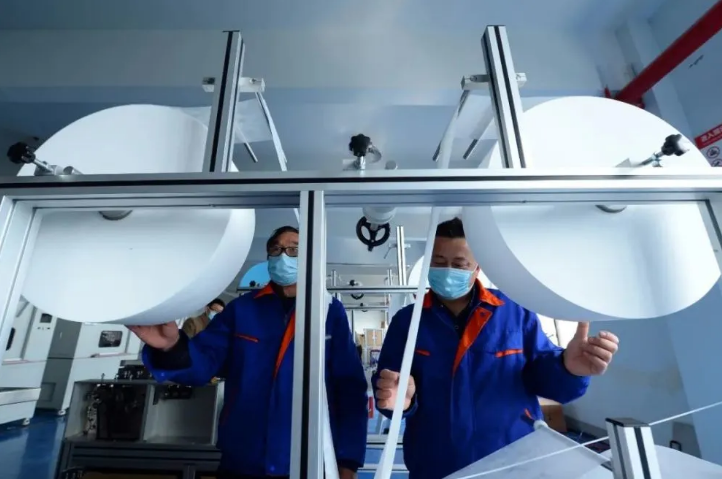The truth behind face mask shortage
Since outbreak of corona-virus, many China enterprise have been turning their production line to make face mask. But so far, supply is still insufficient, not able to catch demand. What is the truth behind?
The bottleneck that restricts the production of masks is not in technology and manpower. Jiao Yi, deputy secretary-general of Shenzhen Medical Device Industry Association (hereinafter referred to as "Shenzhen Medical Association") gave China Newsweek a set of data: the mainstream mask machines on the market, the number of beats in one hour is 6,000, and the number of beats in old models is one hour It's 3600-4000. In other words, if the sterilization and analysis periods are not calculated, an average mask machine can produce 5000 masks in one hour. High degree of automation.
Bottleneck is meltblown non woven cloth, one of the key raw materials. The main raw material of melt-blown cloth is polypropylene, which is an ultra-fine electrostatic fiber cloth with a fiber diameter of about 2 microns, which can effectively capture dust. When the virus-containing droplets approach the meltblown cloth, they will be electrostatically adsorbed on the surface and cannot penetrate.

On February 28, 2020, workers were busy producing masks on the Sichuan Xianghemao clothing mask production line to ensure market supply. Published by China News Agency, photo by Li Jianming
For ordinary medical surgical masks, one layer uses a meltblown cloth. As for the higher specification N95, a mask requires at least 3 layers of meltblown cloth. Therefore, it is a necessary raw material for the production of filter masks.
Jiao Yi introduced to China News Weekly that the main material of meltblown cloth is high-melt-finger fiber made of polypropylene. One ton of high-melt-finger fiber can produce 900 kg of melt-blown cloth with a yield of about 90%. Jinlianchuang data shows that in 2019, the annual output of high-melt index fiber is 880,000 tons, even if all converted into meltblown cloth, it is only 792,000 tons, which is far less than the mask production capacity required for epidemic prevention.
In recent years, the market for meltblown cloth has been at a stable level. Only when faced with public health security events such as SARS, Ebola, and avian influenza outbreaks, a short-term outbreak will occur. Enterprises tend to profit, and the market capacity is limited, so naturally they will not increase production.
It is understood that there are about 100 enterprises in the country that can produce medical meltblown cloths with a BFE95 or above, with a daily output of about 100 tons.
According to the research conducted by the Shenzhen Medical Association, one ton of meltblown cloth can make 900,000 to 1 million medical surgical masks, minus the losses in actual production. 100 tons, which is the national total output of medical meltblown cloth in one day, can make 90 million masks.
According to the reverse production rate of the mask machine, it can be obtained that 100 tons of meltblown cloth can only provide 750 mask machines for 24 hours. However, according to an earlier report by the China Entrepreneurs Magazine, only Yinghe Technology, a mask machine manufacturer (also a temporary transformation, whose main business was lithium battery manufacturing equipment) had already received 1,700 units. Insufficient upstream raw materials, but the flood of downstream equipment supply, the industrial chain will inevitably be distorted.

On February 27, 2020, an auto parts mold research and development enterprise staff in Shuangfeng Town, Taicang City, Suzhou, Jiangsu Province, conducted pre-factory checking of the body mask machine production equipment that will soon be shipped. Since the beginning of February, the company has carried out research and development adjustments based on market demand, and has developed a body mask machine with a daily production capacity of 140,000. Published by China News Agency, Photo by Zhong Xinwang
So, since demand exists and is profitable, why don't companies enter the upstream and directly participate in the manufacture of meltblown cloth, all investing in mask production lines?
The first is economic factors. Compared to the production line of masks, the cost of participating in the manufacture of meltblown cloth is too great. The equipment for the production of meltblown cloth has a domestic price of about 5 million yuan and imported equipment of more than 10 million yuan.
In contrast, the flat one-to-two mask production line on the market, even if the price has risen recently, it only needs less than 600,000 yuan to assemble. Considering that the epidemic is likely to end when summer arrives, SMEs are naturally more motivated to enter the downstream market to "beat it" rather than enter the costly upstream raw material market. This artical is translated by Jinggoal.
The second is the cost of learning. A series of equipment purchase, factory entry, commissioning, and training takes time, ranging from three months to one month. The industry consensus is that after one month, the epidemic is likely to have passed. This directly leads to the fact that even state-owned and state-owned enterprises that are not for profit can not make up their minds to run into the game.
Jiao Yi revealed to China News Weekly that as early as January, a Shenzhen company began to hoard melt-blown cloth. With the development of the epidemic, the price of melt-blown cloths has risen rapidly. The original price of melt-blown cloths at a price of about RMB18,000 and 19,000 per ton has gradually increased to one hundred thousand to one hundred thousand, and then to two hundred thousand. Despite the high price, many mask factories requisitioned by the government have to buy them regardless of cost in order to complete the hard task.
Soaring costs are directly reflected in the prices of end consumers. "Spread it down, at least one dollar each."
Upstream raw materials are insufficient, but small and medium-sized enterprises are still swarming into the downstream and began to lay a large number of production lines. In response to this trend, Jiao Yi expressed concern: "Insufficient materials can not guarantee production, (these equipment) is equivalent to a pile of scrap iron.
